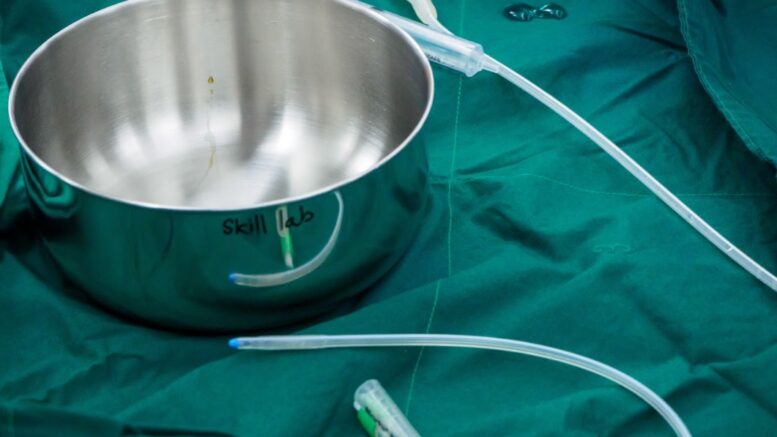A routine medical procedure, urethral catheterization enables urine drainage from the bladder using a urinary catheter. This device is a hollow, flexible tube inserted into the urethra to empty the bladder and collect urine.
Catheters are typically inserted by a nurse or doctor, but in some cases, the devices can be inserted by the patients themselves. Urinary catheterization is done on 15-25% of hospitalized patients and is commonly used for diagnostic and therapeutic purposes.
A urinary catheter is necessary for people who have difficulty urinating on their own or for emptying the bladder to perform medical tests. This medical procedure is also used before or after surgery is done on the patient. Some other reasons this medical procedure is required include the following:
- Obstruction in the urethra, like prostate enlargement, kidney stones trapped in the urethra, and others
- Nerve damage or bladder weakness
- Administer medicine directly into the patient’s bladder during chemotherapy treatment
- Treatment for urinary incontinence
- To empty a patient’s bladder who received epidural anesthetic during childbirth
Catheters may be done as an in-and-out procedure for immediate bladder drainage or left for a longer time as needed. Based on dwell time, urinary catheters have two main types:
- Indwelling catheters: Can remain in place for a longer period
- Intermittent catheters: Can be removed once the bladder is drained
This article will discuss two types of intermittent catheters, the straight tip and coude catheters, including their characteristics and uses.
What are coude catheters?
A swollen prostate can pinch the urethra, which makes catheter insertion difficult due to the blockage. In instances like these, coude catheters are used. Coude catheters have a curved tip, which helps the catheter to be inserted fully to reach the patient’s bladder. ‘Coude’ is French for elbow, where it got its name.
Coude catheters also come in various styles, like the Tiemann tip, olive tip, and tapered tip. The tapered tip is the most common and is suited to deal with minor blockages or obstructions. A Tiemann tip is long and narrow, which helps limit a patient’s discomfort. On the other hand, an olive-tipped coude catheter is more rounded, which helps widen a patient’s narrow urethra during the device’s insertion.
When is a coude catheter used?
The coude catheter’s shape makes the catheter easier to insert into the urethra and maneuver around the prostate and into the bladder. This catheter is also easier for patients who do the insertion themselves. A doctor usually recommends a coude catheter when the patient feels discomfort with other types of catheters, such as a straight tip catheter.
The catheter’s shape lessens the friction between the device and the urinary tract, especially when the device is sliding over the prostate gland during insertion. Consequently, coude catheters are used more often by men. However, women can also benefit from coude catheters if a blockage causes pain during self-catheterization.

Your physician may also suggest this catheter if you have a narrow urethra or have just gone under the knife. Using this catheter helps you avoid further complications and lessens whatever discomfort you may be experiencing with other types of catheters. Other reasons you may need a coude catheter are the following:
- Presence of false passages in the urethra
- You have an atrophic vagina
- You’re about to have prostate surgery or have scars from previous prostate surgery
- Presence of stoma
- You suffer from urethral trauma
Of course, you can ask your urologist if you have any questions regarding coude catheters.
What is a straight tip catheter?
Straight tip catheters are the most commonly used catheters. As the name suggests, they’re straight with no curves at the tip, unlike the coude catheter. They come in various sizes and options to meet a patient’s requirements; some are pre-lubricated, while some are lubricated manually before insertion.
The catheter has a simple design. It has a straight tip with eyelets or holes, allowing the bladder to empty directly into the tube. It’s also called the original catheter because the design has remained the same since it was first used.
When is a straight tip catheter used?
Most people use straight tip catheters, the default intermittent catheters prescribed by physicians for people diagnosed with urinary problems. This catheter is safe and easy to use, not to mention inexpensive. Because it’s straight, insertion is fairly easy. A straight tip catheter can be used by men and women in their homes, even with no healthcare professional present.
But as urethras aren’t all the same, this catheter isn’t for everybody. Some patients might not be able to insert a straight tip catheter easily. Inform your healthcare professional immediately if you feel discomfort or pain when using this catheter. Your healthcare professional, in such cases, may prescribe other types of urinary catheters.
The important thing is not to force the insertion. Otherwise, you’ll run the risk of infection. Remember to keep straight tip catheters clean and uncontaminated. Infections from intermittent catheters can cause urinary tract infections (UTIs).
Summary
A straight tip catheter is the most commonly used catheter. Its shape makes insertion fairly straightforward. A coude catheter, on the other hand, has a curved tip that makes it easier to get past blockages and narrow spots in the urinary tract.
Urinary catheters are prescribed for people with various urinary problems, including urinary incontinence. Depending on dwell time, urinary catheters have two types: indwelling and intermittent. Both the coude catheter and straight tip catheter are intermittent catheters.
